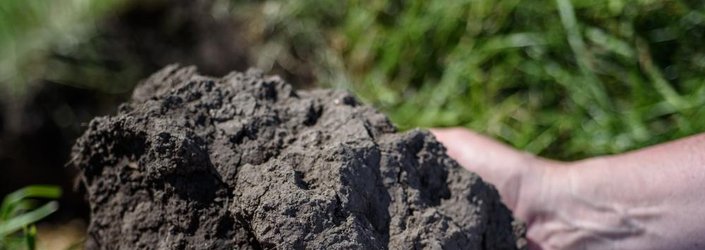
Supply of nitrogen by soil organic matter
A soil with a main crop that has for example 3 % of humus contains 5000 kg of organic nitrogen. This nitrogen is essentially made of proteins incorporated into the substances that make up humus.
Each year about 2 to 3 % of this huge pool of nitrogen is mineralized. The exact quantity which is mineralized and the exact time of this mineralization may strongly vary depending on the climate and soil type (temperature, aeration of the soil, moisture, pH, tillage, etc...).
Target
Maintain the process of humification and mineralization of the organic matter at a high level; avoid excessive amounts of nitrogen production.
Important to know
Up to 60 % of the nitrogen absorbed by cultivated crops comes from the organic matter of the soil and not from supplied organic fertilizers. The cultivated soil humus is the largest pool of nitrogen that is available to the farmer. The question is how this offer in nutrients can be used effectively without losing the humus. To do this, you have to practice the art of proper nutrition of microorganisms of the soil, because they transform the supplied organic fertilizers into the humus and free (or “mineralize”) each year a portion of nitrogen and other nutrients contained in the humus.
Cultivation processes such as tillage or incorporation of green fertilizers can start the mineralization. Carbon is also supply of proteins, for example in form of the cattle manure, which contributes to an increase in the rate of humus in the soil as humus contains a lot of proteins.
Source: Fourniture d'azote par la matière organique du sol. www.bioactualites.ch [online]. [cit. 2017-03-10]. Available at: http://www.bioactualites.ch/fr/sol-sain-plantes-saines/grandes-cultures-bio/fertilisation/matieresol-fourniture.html. Own translation.
